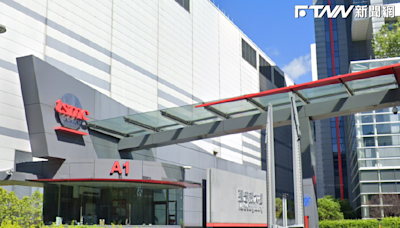搜尋結果
TSMC. Taiwan Semiconductor Manufacturing Company Limited ( TSMC; also called Taiwan Semiconductor) [4] [5] is a Taiwanese multinational semiconductor contract manufacturing and design company. It is the world's second most valuable semiconductor company, [6] the world's largest dedicated independent ("pure-play") semiconductor foundry, [7] and ...
- 73,090 (2022)
- US$73.67 billion (2022)
In semiconductor manufacturing, the "3 nm" process is the next die shrink after the "5 nm" MOSFET (metal–oxide–semiconductor field-effect transistor) technology node. South Korean chipmaker Samsung started shipping its "3 nm" gate all around (GAA) process, named "3GAA", in mid-2022. [1] [2] On 29 December 2022, Taiwanese chip manufacturer ...
- History
- Composition
- Operation
- Circuit Symbols
- Applications
- Construction
- Scaling
- Other Types
- See Also
- External Links
The basic principle of this kind of transistor was first patented by Julius Edgar Lilienfeldin 1925. The structure resembling the MOS transistor was proposed by Bell scientists William Shockley, John Bardeen and Walter Houser Brattain, during their investigation that led to discovery of the transistor effect. The structure failed to show the antici...
Usually the semiconductor of choice is silicon. Some chip manufacturers, most notably IBM and Intel, use an alloy of silicon and germanium (SiGe) in MOSFET channels.[citation needed] Many semiconductors with better electrical properties than silicon, such as gallium arsenide, do not form good semiconductor-to-insulator interfaces, and thus are not ...
Metal–oxide–semiconductor structure
The traditional metal–oxide–semiconductor (MOS) structure is obtained by growing a layer of silicon dioxide (SiO2) on top of a silicon substrate, commonly by thermal oxidation and depositing a layer of metal or polycrystalline silicon (the latter is commonly used). As silicon dioxide is a dielectric material, its structure is equivalent to a planar capacitor, with one of the electrodes replaced by a semiconductor. When a voltage is applied across a MOS structure, it modifies the distribution...
MOS capacitors and band diagrams
The MOS capacitor structure is the heart of the MOSFET. Consider a MOS capacitor where the silicon base is of p-type. If a positive voltage is applied at the gate, holes which are at the surface of the p-type substrate will be repelled by the electric field generated by the voltage applied. At first, the holes will simply be repelled and what will remain on the surface will be immobile (negative) atoms of the acceptor type, which creates a depletion region on the surface. A hole is created by...
Structure and channel formation
A MOSFET is based on the modulation of charge concentration by a MOS capacitance between a body electrode and a gate electrode located above the body and insulated from all other device regions by a gate dielectric layer. If dielectrics other than an oxide are employed, the device may be referred to as a metal-insulator-semiconductor FET (MISFET). Compared to the MOS capacitor, the MOSFET includes two additional terminals (source and drain), each connected to individual highly doped regions t...
A variety of symbols are used for the MOSFET. The basic design is generally a line for the channel with the source and drain leaving it at right angles and then bending back at right angles into the same direction as the channel. Sometimes three line segments are used for enhancement mode and a solid line for depletion mode (see depletion and enhan...
Digital integrated circuits such as microprocessors and memory devices contain thousands to billions of integrated MOSFET transistors on each device, providing the basic switching functions required to implement logic gates and data storage. Discrete devices are widely used in applications such as switch mode power supplies, variable-frequency driv...
Gate material
The primary criterion for the gate material is that it is a good conductor. Highly doped polycrystalline siliconis an acceptable but certainly not ideal conductor, and also suffers from some more technical deficiencies in its role as the standard gate material. Nevertheless, there are several reasons favoring use of polysilicon: 1. The threshold voltage (and consequently the drain to source on-current) is modified by the work function difference between the gate material and channel material....
Insulator
As devices are made smaller, insulating layers are made thinner, often through steps of thermal oxidation or localised oxidation of silicon (LOCOS). For nano-scaled devices, at some point tunneling of carriers through the insulator from the channel to the gate electrode takes place. To reduce the resulting leakage current, the insulator can be made thinner by choosing a material with a higher dielectric constant. To see how thickness and dielectric constant are related, note that Gauss's lawc...
Junction design
The source-to-body and drain-to-body junctions are the object of much attention because of three major factors: their design affects the current-voltage (I-V) characteristics of the device, lowering output resistance, and also the speed of the device through the loading effect of the junction capacitances, and finally, the component of stand-by power dissipation due to junction leakage. The drain induced barrier lowering of the threshold voltage and channel length modulation effects upon I-V...
Over the past decades, the MOSFET (as used for digital logic) has continually been scaled down in size; typical MOSFET channel lengths were once several micrometres, but modern integrated circuits are incorporating MOSFETs with channel lengths of tens of nanometers. Robert Dennard's work on scaling theory was pivotal in recognising that this ongoin...
Dual-gate
The dual-gate MOSFET has a tetrode configuration, where both gates control the current in the device. It is commonly used for small-signal devices in radio frequency applications where biasing the drain-side gate at constant potential reduces the gain loss caused by Miller effect, replacing two separate transistors in cascode configuration. Other common uses in RF circuits include gain control and mixing (frequency conversion). The tetrodedescription, though accurate, does not replicate the v...
Depletion-mode
There are depletion-mode MOSFET devices, which are less commonly used than the standard enhancement-mode devices already described. These are MOSFET devices that are doped so that a channel exists even with zero voltage from gate to source. To control the channel, a negative voltage is applied to the gate (for an n-channel device), depleting the channel, which reduces the current flow through the device. In essence, the depletion-mode device is equivalent to a normally closed (on) switch, whi...
Metal–insulator–semiconductor field-effect transistor
Metal–insulator–semiconductor field-effect-transistor, or MISFET, is a more general term than MOSFET and a synonym to insulated-gate field-effect transistor(IGFET). All MOSFETs are MISFETs, but not all MISFETs are MOSFETs. The gate dielectric insulator in a MISFET is a substrate oxide (hence typically silicon dioxide) in a MOSFET, but other materials can also be employed. The gate dielectric lies directly below the gate electrode and above the channel of the MISFET. The term metal is historic...
"Understanding power MOSFET data sheet parameters – Nexperia PDF Application Note AN11158" (PDF). Archived (PDF)from the original on 2022-10-09."An introduction to depletion-mode MOSFETs". Archived from the originalon 28 September 2008."Power MOSFETs". Archived from the original on 2012-07-06. Retrieved 2010-03-04.Eigenvalues and eigenvectors. In linear algebra, it is often important to know which vectors have their directions unchanged by a given linear transformation. An eigenvector ( / ˈaɪɡən -/ EYE-gən-) or characteristic vector is such a vector. Thus an eigenvector of a linear transformation is scaled by a constant factor when the linear ...
Excess steam from the drywell enters the wetwell water pool via downcomer pipes. SFP: spent fuel pool area. SCSW: secondary concrete shield wall. The Fukushima nuclear accident was a major nuclear accident at the Fukushima Daiichi nuclear power plant in Ōkuma, Fukushima, Japan which began on March 11, 2011.
MEDICIS. Produces isotopes for medical purposes. The Large Hadron Collider ( LHC) is the world's largest and highest-energy particle collider. [1] [2] It was built by the European Organization for Nuclear Research (CERN) between 1998 and 2008 in collaboration with over 10,000 scientists and hundreds of universities and laboratories across more ...
The Tearsmith (Italian: Fabbricante di lacrime) is a 2024 Italian teen romance film directed by Alessandro Genovesi, based on the novel of the same name by Erin Doom.. It was released on Netflix on 4 April 20 Plot Eight-year-old Nica is left orphaned when her ...


